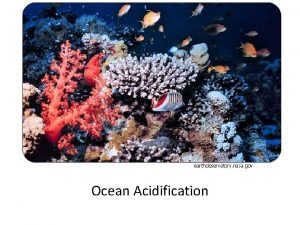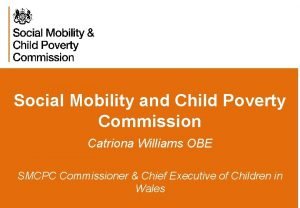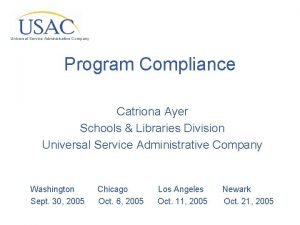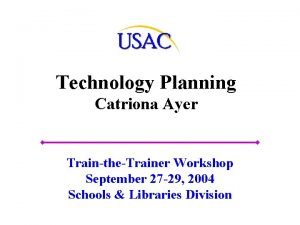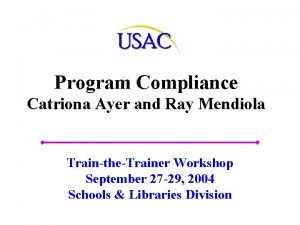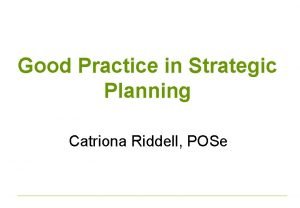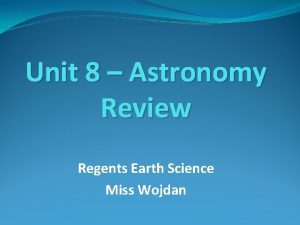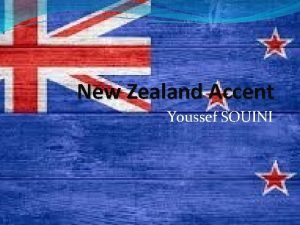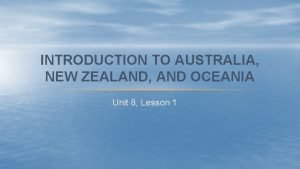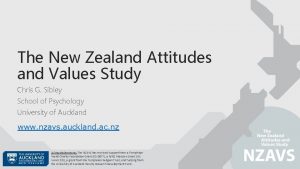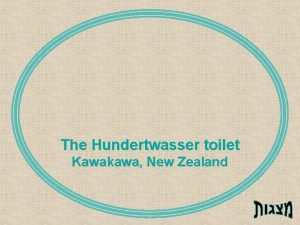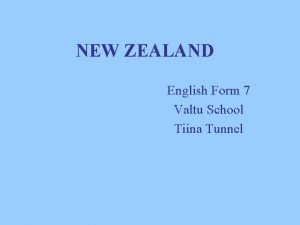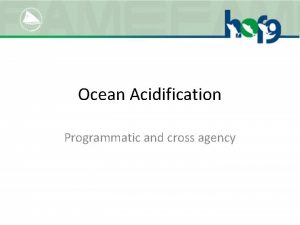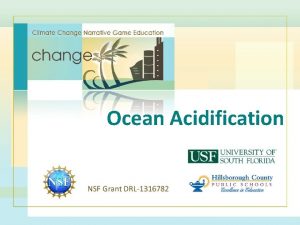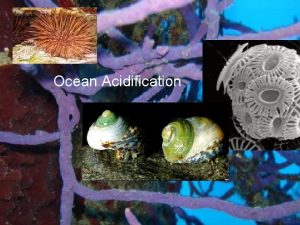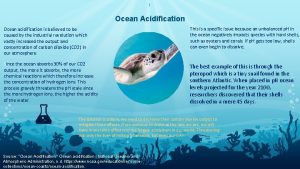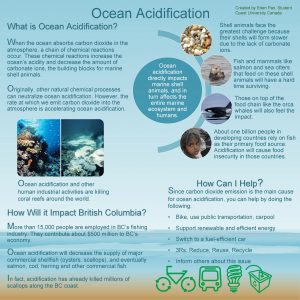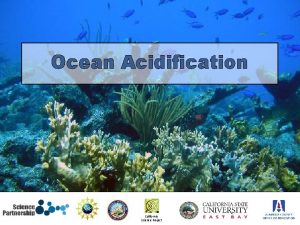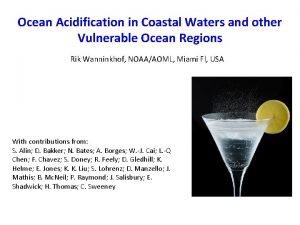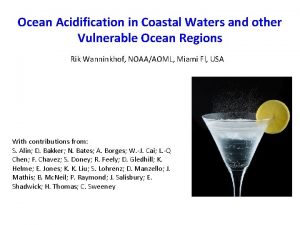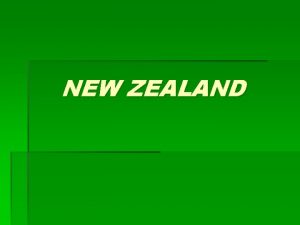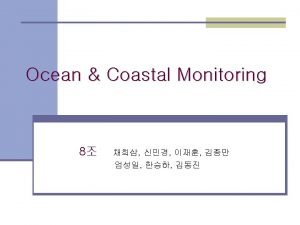Ocean acidification and New Zealand coastal waters Catriona














- Slides: 14

Ocean acidification and New Zealand coastal waters Catriona Hurd, Department of Botany, University of Otago

NZ’s coastal ecosystems • Temperate reefs • Primary producers: – seaweeds and phytoplankton • Secondary producers – Filter feeders: mussels, oysters, barnacles – Grazers: kina, paua, limpets • Predators – Starfish – Fish

Which species will OA affect directly? • All algae – fleshy and calcifying • Calcifying invertebrates: – Mollusks: paua (abalone), oysters, mussels – Crustaceans: barnacles, crabs, crayfish – Echinoderms: kina, (urchins), starfish – Sponges – Corals – Bryozoans – Serpulid worms Stanley (2008) Chem. Rev. 108; Hurd et al. J. Phycol. (2009 in press)

Seaweed-based ecosystems • Ecosystem engineers – Provide habitat complexity and shelter for animals • Supply 50% of energy to coastal food webs – Some seaweeds are grazed – Most provide food particles - ‘kelp flakes’ • Globally unique ~800 seaweed species ~30% found only in NZ Hurd et al. (2004) Phycol. Res. 52

Predictions on how seaweed productivity will be affected • Increase in growth and productivity of fleshy seaweeds – Seaweeds reliant on only CO 2 will have greatest increase • Decline in growth of calcifying (coralline) seaweeds – 80% cover of subtidal habitats around Otago Hurd et al. (2009) J. Phycol. In press

Coralline seaweeds • Global distribution • Invertebrate recruitment and settlement Paua larva – Release chemicals that induce attachment and metamorphosis in e. g. paua • Vulnerable • Canaries in the coal mine? Paua larva newly settled on coralline seaweed Nelson (2009) Mar. Fresh. Res. 60

Calcifying invertebrates • A substantial proportion of marine invertebrates calcify • Keystone species – kina (sea urchins) • Commercial species – Mussels, oysters, paua (abalone) • Predators – starfish

Impacts of high CO 2 (low p. H) - Echinoderms • Keystone species controlling kelp distributions • Fished extensively worldwide • Production of outer test affected during larval settlement stage at high p. CO 2

Molluscs – reduced Calcification at low p. H Ecosystem function – Bioturbators, Food source & Habitat modifiers C. gigas Net calcification rate umol Ca. CO 3 g FW-1 h-1 M. edulis Gazeau et al. 2007

Bivalves – reduced Calcification at low p. H Incubations at p. H 7. 3 (max p. H decrease in business-as-usual climate change scenario by year 2300) (Caldeira and Wickett, 2003) control 55 % growth reduction & 65% metabolic depression Diversion of energy to shell maintenance from growth & reproduction Michailidis et al. (2004)

Economic importance Mussel farms How will lower p. H affect Greenlip Mussels, Paua and other NZ commercial species? • green lipped mussels • 898 farms, approx. 6535 ha • total revenue $181, 400, 000 Oyster farms • pacific oysters, North Island • 236 farms, approx. 928 ha • total revenue $26, 000 Photos and data from www. fish. govt. nz

p. H Ecosystem responses • Volcanic CO 2 -vents • Coralline seaweeds replaced by fleshy species at low p. H • Decline in all calcareous invertebrates at low p. H Hall-Spencer et al. (2008) Nature 454

Seaweeds engineer their own environment • Photosynthesis raises the p. H of seawater • Calcification rates of coralline seaweeds enhanced in this seagrass meadow Semesi et al. (2009) Mar. Ecol. Prog. Ser. 382

New Zealand coastal waters: What do we need to know? • Species-specific responses to OA – Select ‘model’ seaweed animal species – Controlled laboratory experiments – Acclimation and adaptation • Ecosystem responses – What knowledge do we have of NZ coastal ecosystems? – Near-shore observatories – Food-web studies
 Ocean acidification
Ocean acidification Non calcifiers examples
Non calcifiers examples Catriona williams obe
Catriona williams obe Catriona ayer
Catriona ayer Catriona ayer
Catriona ayer Catriona ayer
Catriona ayer Catriona riddell
Catriona riddell Ocean tides observed at coastal locations
Ocean tides observed at coastal locations Difference between australian and new zealand accent
Difference between australian and new zealand accent Lesson 1 an introduction to oceania
Lesson 1 an introduction to oceania New zealand attitudes and values study
New zealand attitudes and values study Internal medicine society of australia and new zealand
Internal medicine society of australia and new zealand When did hundertwasser move to new zealand
When did hundertwasser move to new zealand New zealand national sport
New zealand national sport New zealand disability strategy
New zealand disability strategy

